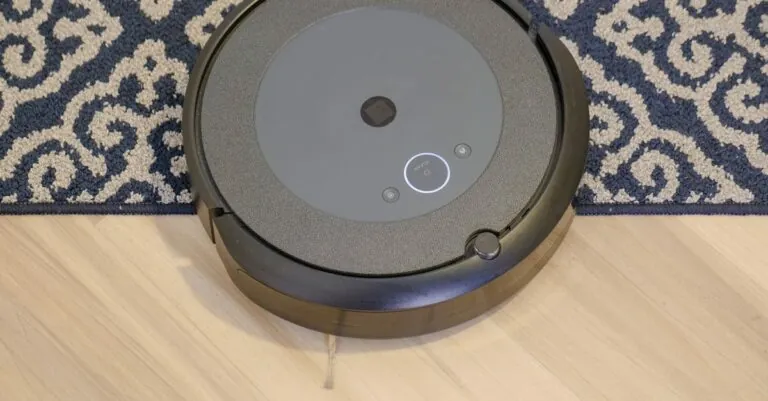Imagine a world where your phone does more than just ring and send texts. Welcome to smart living at your fingertips! With a few taps and swipes, everyday tasks transform into seamless experiences. From managing your home to tracking your health, your smartphone becomes the ultimate sidekick in this fast-paced life.
Gone are the days of juggling multiple devices and endless to-do lists. Smart living means embracing technology that simplifies life, making it not just easier but also a lot more fun. Picture controlling your lights with a voice command while sipping coffee in your pajamas—now that’s living smart! Dive into the exciting realm of smart living and discover how your phone can turn mundane routines into extraordinary moments.
Table of Contents
ToggleOverview of Smart Living at Telephone
Smart living at telephone focuses on integrating technology seamlessly into daily routines. This concept prioritizes efficiency, convenience, and enhanced experiences through smartphone connectivity. Users can control various aspects of their home environment right from their devices. For instance, adjusting lighting, temperature, and security features occurs effortlessly through apps.
Smartphones act as central hubs for managing connected devices. With just a few taps, individuals can set schedules for appliances or monitor home security. Voice-assisted technology simplifies tasks even further, allowing users to issue commands hands-free. This interaction elevates ordinary activities into streamlined processes.
Enhanced connectivity contributes significantly to a more organized lifestyle. Notifications and reminders help individuals manage tasks and appointments, reducing the risk of forgetting important obligations. Integrating smart home devices also promotes energy savings, providing insights into consumption patterns.
Privacy and security represent crucial considerations in the smart living landscape. Users remain aware of potential vulnerabilities associated with connected devices. Experts recommend choosing products with robust security features to safeguard personal information.
Many companies committed to advancing smart living technology continually release new apps and devices. These innovations further enhance the user experience, making home automation more accessible. By embracing these advancements, individuals can create a personalized environment that supports their unique needs and preferences.
Ultimately, smart living at telephone emphasizes a convenient, efficient lifestyle through advanced technology. The transformation highlights how smartphones simplify daily routines, marking a clear evolution in how individuals interact with their home environments.
Benefits of Smart Living
Smart living offers essential advantages that enhance daily routines and streamline home management. Convenience stands at the forefront, making ordinary tasks easier than ever.
Convenience and Efficiency
Smart living elevates everyday living through intuitive control of home devices. Users can adjust lighting and temperature with simple taps or voice commands from their smartphones. Scheduling appliances like coffee makers or robotic vacuums saves time and effort. Notifications about maintenance or energy usage also help users stay informed without hassle. As a result, integrating smart technologies leads to improved organization and reduced stress during busy days.
Enhanced Security Features
Safety significantly improves with smart living technologies in play. Smart security cameras allow homeowners to monitor their property in real-time from anywhere, fostering peace of mind. Automated door locks can be managed remotely, ensuring only authorized individuals gain access. Systems that offer alerts for unusual activity strengthen home security further. Enhanced security features help individuals feel secure in their environments, allowing them to focus on what matters most in their lives.
Smart Devices for Living
Smart devices play a crucial role in enhancing home convenience and efficiency. Users can create a connected environment that simplifies daily activities and improves overall quality of life.
Home Automation Systems
Home automation systems offer control over various features, from lighting to security. These systems integrate multiple devices, enabling seamless management through a single interface. Smart thermostats adjust temperatures automatically based on user preferences, leading to energy savings. Automated lighting systems can be programmed to turn on and off at specific times, promoting energy efficiency. Smart security systems encompass cameras and alarms, providing real-time monitoring and alerts. Many systems also support voice commands, allowing for hands-free operation. Overall, home automation fosters a more responsive living space that adapts to individual needs.
Smart Appliances
Smart appliances contribute significantly to kitchen efficiency and convenience. Refrigerators equipped with connectivity can track food inventory and suggest recipes based on available ingredients. Smart ovens allow remote control, offering the ability to preheat or adjust cooking settings from a smartphone. Dishwashers with programmable features optimize water usage, enhancing sustainability. Laundry machines equipped with smart technology send notifications about cycles, making laundry management easier. Each appliance integrates advanced features that streamline daily tasks and promote energy conservation. Adopting smart appliances transforms traditional kitchens into functional, modern spaces tailored to user lifestyles.
Challenges of Smart Living
Smart living presents certain challenges that users must navigate alongside its many benefits.
Privacy Concerns
Privacy becomes a primary issue with smart living. Users risk exposing personal data through connected devices if they don’t implement adequate security measures. Vulnerabilities in smart home systems can lead to unauthorized access, making it essential for individuals to select devices with strong privacy protections. Data collection practices also vary among companies, raising questions about how user information is handled. Awareness of privacy settings is crucial, as individuals should regularly review and adjust configurations to safeguard their information.
Technical Issues
Technical issues often arise in smart living environments. Connectivity problems can disrupt the seamless operation of smart devices, impacting the overall experience. Compatibility between devices can also become a concern, as not all products communicate effectively with each other. System updates may cause features to malfunction or become temporarily inaccessible, leading to frustration. Troubleshooting can entail significant time and effort, as users might need to rely on customer support or online resources to resolve problems. Consistent technical maintenance helps ensure a smoother smart living experience.
Future of Smart Living at Telephone
Advancements in smart living technology promise to redefine everyday experiences. Homes equipped with artificial intelligence can intuitively respond to resident habits, adjusting settings based on user preference. Seamless integration among smart devices simplifies interaction, allowing users to control multiple functions through a single command.
Incorporation of 5G connectivity enhances responsiveness of smart devices, reducing lag and allowing for real-time data processing. Voice recognition continues to evolve, enabling more sophisticated interactions. Enhanced natural language processing allows devices to understand and execute complex instructions without confusion.
Smart homes are poised to adapt based on analysis of daily routines, improving energy efficiency and overall comfort. Devices equipped with machine learning capabilities can track energy consumption patterns and suggest optimizations for users. Data-driven insights maximize resource management, reducing costs for homeowners while promoting sustainability.
Security features are receiving significant attention as threats to privacy continue to rise. Multi-layered security protocols safeguard personal information, ensuring user data remains protected against unauthorized access. Companies are prioritizing robust encryption methods and regular software updates to maintain security integrity.
Environmental factors also play a critical role in the future of smart living. Integration with renewable energy sources provides users with options for sustainable living. Smart systems can optimize energy use based on solar generation and grid demands, supporting eco-friendly households.
Overall, smart living continues to evolve, driven by innovation and user demands for convenience. The outlook for smart living at telephone promises an exciting, efficient future where technology supports daily life while addressing emerging challenges effectively.
Smart living at home is reshaping how individuals interact with their environments. By leveraging smartphones and connected devices, everyday tasks become more manageable and enjoyable. The potential for enhanced efficiency and convenience is vast, allowing users to create personalized spaces that cater to their lifestyles.
As technology continues to advance, the integration of smart devices will only improve. Future innovations promise to address current challenges while enhancing security and privacy measures. Embracing smart living not only simplifies daily routines but also paves the way for a more sustainable and connected future.








